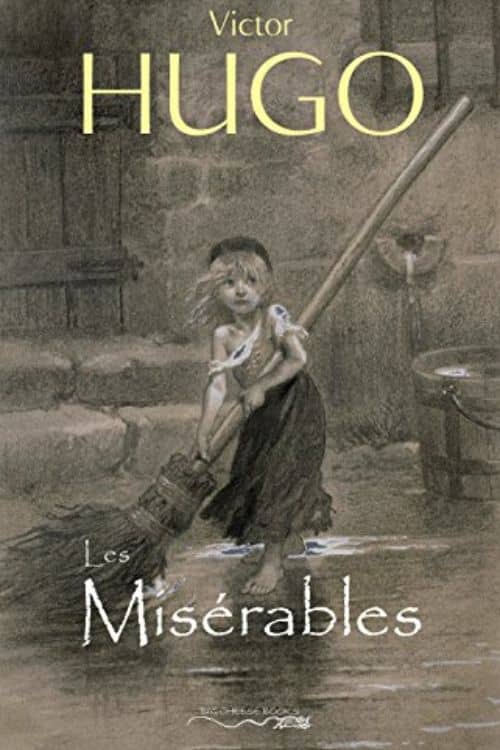Victor Hugo is one of the most renowned and celebrated French writers of all time. He is known for his powerful and emotive storytelling, as well as his deep understanding of human nature. He has written many novels that are considered literary masterpieces, which have been read and loved by millions of people around the world. In this article, we will introduce you to 5 classic novels of Victor Hugo that you must read. These novels are considered to be some of the best works of literature in the French language and are sure to leave a lasting impression on any reader. From the story of ex-convict Jean Valjean in “Les Misérables” to the tale of the hunchbacked bell-ringer Quasimodo in “Notre-Dame de Paris” these novels are a must-read for anyone interested in French literature.
5 Classic Novels of Victor Hugo That You Must Read
The Hunchback of Notre-Dame (1831)

The story is set in 15th-century Paris, in and around the Notre-Dame Cathedral. The novel centers around Quasimodo, the hunchbacked bell-ringer of Notre-Dame, and his love for the beautiful gypsy dancer, Esmeralda.
The story begins with Quasimodo being taken in and cared for by the Archdeacon Claude Frollo, who is also the novel’s main antagonist. Frollo is a man consumed by his own lust and obsession with Esmeralda, and he manipulates Quasimodo into doing his bidding, including abducting Esmeralda.
Esmeralda is saved by the captain of the guards, Phoebus, who she falls in love with, but Phoebus is engaged to a different woman and uses Esmeralda for his own pleasure. Meanwhile, Quasimodo’s feelings for Esmeralda grow stronger, and he begins to question the intentions of Frollo.
The novel reaches its climax when Esmeralda is falsely accused of murder, and Quasimodo comes to her defense, but both of them are captured by the authorities. Esmeralda is sentenced to death, and Quasimodo is left alone and heartbroken. In the end, Esmeralda is hanged, and Quasimodo dies of starvation and heartbreak in the cathedral.
The novel is known for its portrayal of the ugliness of human nature and its powerful themes of love, acceptance, and redemption.
Les Misérables (1862)

The novel is set in Paris, France during the early 19th century and is a story of redemption and love.
The main character of the novel is Jean Valjean, a former convict who has served 19 years in prison for stealing a loaf of bread. Upon his release, he struggles to find work and is constantly hunted by the ruthless inspector Javert, who is determined to send him back to prison.
Valjean eventually finds work as a factory owner in the small town of Montreuil-sur-Mer and becomes a respected member of the community. However, his past catches up to him when he takes in a young girl, Cosette, who is the daughter of a dying woman he has helped. Javert discovers his whereabouts and begins to stalk him once again.
Valjean and Cosette flee to Paris, where they live in hiding. As the years pass, Cosette grows up and falls in love with a young student, Marius. Meanwhile, the country is in turmoil as the French Revolution begins and a group of students, led by Marius, fight for their rights.
Valjean is torn between his love for Cosette and his desire to protect her from the violence of the revolution. He eventually sacrifices his own happiness to ensure her safety and goes into hiding once again.
The novel ends with the death of Valjean, who is finally able to find redemption and peace in his last moments. The story of Les Misérables is a powerful and emotional tale of love, sacrifice, and the power of redemption. It has become one of the most beloved and enduring novels in the world, and has been adapted into a number of stage productions, films, and operas.
The Toilers of the Sea (1866)

It is set on the island of Guernsey, which is located in the English Channel. The story follows the life of a fisherman named Gilliatt, who is deeply in love with a young woman named Deruchette.
Gilliatt is a hardworking and determined fisherman, who spends most of his days out at sea. One day, he discovers a shipwrecked vessel that has been stranded on a reef. He sees the opportunity to salvage the ship and decides to take on the dangerous task of trying to recover it.
Gilliatt’s efforts to salvage the ship are hindered by the treacherous waters, and he must also contend with the hostile reactions of the island’s other fishermen, who see him as a rival. Despite these obstacles, Gilliatt persists in his mission, and eventually succeeds in salvaging the ship.
However, his success comes at a great personal cost, as he is severely injured in the process. Deruchette, who has always been in love with Gilliatt, nurses him back to health. The two of them finally confess their love for each other and decide to marry.
The novel ends with Gilliatt and Deruchette happily married and living a peaceful life on the island. The novel is a commentary on the harsh realities of life at sea and the sacrifices that people make for the people they love. It is also a story of perseverance and determination in the face of adversity.
The Man Who Laughs (1869)

The story is set in 17th century England and tells the tale of Gwynplaine, a young man who was disfigured as a child by having his face carved into a permanent grin by a group of gypsies.
The novel begins with Gwynplaine as a young boy, living with his mother in a small village in the English countryside. One day, a group of gypsies come to the village and kidnap Gwynplaine and his mother, taking them away to a far-off land. Gwynplaine’s mother is killed, and Gwynplaine is left alone with the gypsies. They decide to disfigure him by carving a permanent grin on his face, thinking that it would make him a more valuable attraction in their traveling freak show.
Years pass, and Gwynplaine grows up and becomes a successful performer in the gypsy’s show. He becomes known as “the man who laughs” and becomes a sensation across Europe. He meets and falls in love with a blind girl named Dea, and together they travel the continent, performing in front of large crowds of people.
As Gwynplaine becomes more successful, he begins to question the life he has been living and the way he has been treated by the gypsies. He decides to leave the show and go in search of his true identity and the truth about his past. He discovers that he is the son of a nobleman and that his mother had been falsely accused of treason and executed.
Gwynplaine becomes determined to clear his mother’s name and restore his family’s honor. He sets out to find the man responsible for his mother’s death and the disfigurement of his face. Along the way, he faces many challenges, including being hunted by the authorities and encountering many people who try to take advantage of him because of his disfigurement.
In the end, Gwynplaine succeeds in his quest, and he and Dea are finally able to live a happy life together, free from the burden of his past. The novel is a powerful and emotional story about the struggles of a man who is forced to live his life as a freak and the lengths he goes to in order to reclaim his identity and honor.
Ninety-Three (1874)

It is set in the French Revolution and tells the story of the Reign of Terror and the fall of the Girondins, a political group that opposed the radical Jacobins.
The novel follows the story of several characters who are caught up in the tumultuous events of the revolution. The main character is Henri Duval, a nobleman who is forced to flee his home and take refuge in the countryside. He is joined by other characters, including a young girl named Lucile and an old priest named Abbe Chatelard.
As the revolution progresses, Duval and his companions are forced to confront the brutal realities of the Reign of Terror. They witness the execution of many of their friends and loved ones, and are forced to make difficult choices in order to survive.
Despite the horrors they face, Duval and his companions remain committed to the principles of freedom and justice that inspired the revolution in the first place. They refuse to give up hope, even as the Jacobins tighten their grip on power and the Reign of Terror reaches its climax.
In the end, Duval and his companions are able to escape the revolution and start a new life together. However, the novel leaves the reader with a sense of the immense tragedy and loss that was inflicted on the French people during the revolution.
Also Read: Top 10 Must-Read Books by Toni Morrison



